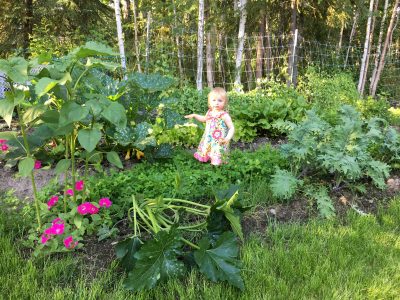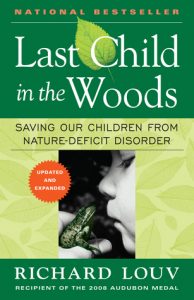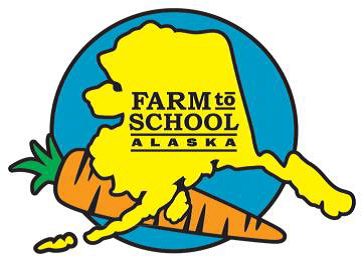Sometime ago, I read the book Last Child in the Woods: Saving our Children from Nature Deficit Disorder, by Richard Louv. I was concerned children were growing up indoors, eyes focused on a screen, and not engaging in activities that would inspire an interest and curiosity in the outdoor world. This book was a great resource regarding the importance of outdoor time on children. What I did not know until recently is that the website for this book also has a resource guide supplement that includes activities, books and helpful links for parents wanting to find ways to involve children in the outdoors. One of the suggested activities is to plant a garden. I thought, well that makes sense! I remember reading about the book Square Foot Gardening and how this approach was great for children because the garden is more manageable for smaller, shorter statures of children. (Last Child in the Woods, p. 216). Gardens are also great for children because of the positive physical and mental affects, the creativity and inspiration found with gardening, the education from the science of gardening, and the fond memories that can be created between children and adults.
Dirty Hands, Happy Heart
A garden provides a wonderful space for children to simply play in the dirt. While the play itself is good for children, there are also many positive benefits of playing specifically in the dirt. The American Psychological Association, citing Richard Louv’s book, has summarized some of the research related to the positive influences nature has on children:
“One of the most influential longitudinal studies, led by Cornell University environmental psychologist Nancy M. Wells, PhD, found that children who experienced the biggest increase in green space near their home after moving improved their cognitive functioning more than those who moved to areas with fewer natural resources nearby (Environment and Behavior (Vol. 32, No. 6). Similarly, in a study of 337 school-age children in rural upstate New York, Wells found that the presence of nearby nature bolsters a child’s resilience against stress and adversity, particularly among those children who experience a high level of stress (Environment and Behavior, Vol. 35, No. 3).”
PBS also has an article on Gardening with Kids: How it Affects your Child’s Brain, Body and Soul. This article also has links to other websites and garden games available through PBS for children. My favorite information provided in this article is how gardening can positively affect the soul for children by providing “meaningful family connection.” I think this is so important given the prominent role technology plays in children’s lives but also the fast-paced, instant gratification focused society we currently live in. Gardening can be a process that slows us down internally and externally. Be outside, take a deep breath, smell the flowers, wait for your seeds to grow, and enjoy the cycle of garden life.
Inch by Inch, Row by Row
Second, children can learn songs about gardens and parents and children can sing along. Songs may be traditional, educational, or a challenge between parents and teenagers to find current songs that relate to gardens. Of course you could always make up your own songs as well! Sometimes when we hear songs we recall memories associated with certain words of the song or to the tune itself. How great for children to have fond gardening memories and songs to remind them of those memories.
One such favorite is the Garden Song by Pete Seeger.
“Inch by inch, row by row
Gonna make this garden grow
Gonna mulch it deep and low
Gonna make it fertile ground “
One of my favorites is post-garden and is called Canned Goods by Greg Brown.
“There’s peaches on the shelf, potatoes in the bin
Supper ready, everybody come on in
Taste a little of the summer
Taste a little of the summer
Taste a little of the summer
Grandma put it all in jars”
For younger children, there is a great website called Songs for Teaching that has a list of garden themed songs including Garden Boogie, I am a Flower, Incredible Winter Squash, Let’s Root for Root Vegetables, The Pepper Pasadoble, The World’s Favorite Fruit (Tomatoes), Zucchini and so many more!
Gardens in the Classroom, Classroom in the Garden
Schools have also embraced the importance for children to spend time in nature using STEAM (Science, Technology, Engineering, Art, and Math) curriculum; incorporating nature classrooms, and growing school gardens. The Edible Schoolyard Project has an interactive map where you can find local schools in your areas that have gardens. If you don’t see one close by then this might be a project to look into. Recognizing that school gardens are becoming more common, the Alaska Department of Natural Resources has put together a Farm to School food safety guide. This is a must read prior to beginning any school garden. There is information on plot location, soil treatment, plants and seeds, pesticides, and so on. If you are teacher you can find Slow Food USA’s Slow Food Garden Curriculum here.
Little Hands, Big Jobs
Children of all ages and abilities can help in creating fun and crafty garden projects. This can be a great educational opportunity for children to learn about building (measurements, materials, tools, cost, etc.) but also can provide another opportunity to be outside, be active, and participate in the creation of a fabulous garden. Maybe the project is something simple like building a garden bed, to building a bird house, a compost bin, or a garden work center. There are many DIY project websites as well as great ideas and photos on the internet. There is a great website 1001Gardens.org with ideas for creating children’s mud kitchens. These could work great in a garden area for small helpers!

We Reap What We Sow
Gardens are certainly a great hobby for adults, but can be beneficial in a host of ways for children. We as adults should make an effort to include children more often in gardening adventures. Either our own children, grandchildren, nieces, nephews, or other family. We can also reach out to neighbors, organizations, and schools. Even if you don’t have your own space for a garden or a child to connect with in the garden, you could sign up to be a mentor for a child along with signing up for a community garden plot. What a great way to help a child, help the community, and hopefully feel good yourself! There are so many opportunities to engage children in gardening and positively impact children, our future. You know what they say….we reap what we sow!
Note: If you are interested in reading a more in depth book review of Last Child in the Woods and discussion of the content, you might like Not Just Cute, Part 1 and Part 2 blog posts.

